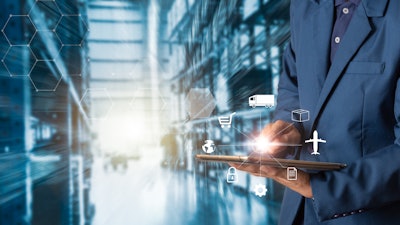
The Coronavirus disease (COVID-19) crisis has quickly developed into a global emergency, with life as we know it having changed utterly in just a few short weeks. With thousands of businesses affected, very few sectors will escape its impact. The supply chain sector is also certainly feeling the pain.
Much of the focus so far has been on grocery shoppers panic-buying, fearing that supply is at risk. These fears have proved largely to be unfounded due to the phenomenal work of supply chain workers, but the fact remains that business as we know it has changed forever.
Safeguarding employees
What will the business landscape look like after COVID-19? It stands to reason that daily processes will change; after all, once the first surge is over, we don’t know if there will be future surges, so precautions will have to be taken to cover that eventuality.
That’s why it is crucial that business owners safeguard their employees as much as possible by upholding strict hygiene standards, emphasising the importance of cough and sneeze etiquette, making hand sanitizers readily available and undertaking regular deep cleans of the work environment. This will take time and money, but the immediate benefit will be a happier – and hopefully healthier – workforce.
Physical interactions will need to be minimized at least for the next 3-6 months, so measures to enable this will need to be taken. These can be complemented by regular information updates and hygiene reminders. But, it’s important to remember that the changes we will see will not be confined to daily processes, and have the potential to be hugely positive for supply chain businesses.
Relationships will change
In a wider sense, it stands to reason that the relationship between client and vendor will have to change following this global pandemic. Many businesses have closed, and more are barely surviving. The U.S. economy is the engine of global growth, and it has been severely affected by this crisis.
In this environment, corporate relationships must become more than simply transactional; businesses that have survived the pandemic – regardless of whether they are global multinationals or small enterprises – will understand that their vendor portfolio has to offer more than merely products.
Businesses that are invested in the success of their clients through finding savings – rather than simply product sales – are the ones that will establish true partnerships that will last. It is crucial that vendors are on the same side of the table as your business.
The basis of a lasting partnership
What will this look like in practice? Take lighting, for example. It has been proven that light-emitting diode (LED) lighting technology saves up to 80% on conventional energy bills, but business owners generally don’t even consider this saving as they are – understandably – more concerned about the cost of the technology to start with, along with its installation, maintenance, the asset’s depreciation in the medium to long term and, once all is said and done, the cost of its replacement.
By partnering with a vendor who is invested in your business’ success, this ceases to be an issue. Light-as-a-Service (LaaS) means that a third provider offers the lighting equipment to a business, installs it, maintains it and replaces it when it needs to be replaced.
The equipment itself is not owned or even leased by the business, meaning a depreciating asset is kept off the balance sheet and the business’s borrowing capacity is not affected in the future. The third party does not charge interest fees and receives its payment from the energy savings realised in the first place. A business model like that is the basis of a lasting partnership.
Saving a huge amount of man hours
Once COVID-19 is nothing but a bad memory, it is clear that real concerns such as addressing the sustainability of a business will once again come to the fore. Ordinarily, a site energy evaluation – or indeed an evaluation over numerous sites – is a long labor-intensive process that would generally take months to finish.
Now, however, industry apps exist that eliminate the need for surveyors to physically be on site to assess the buildings in question. By simply inputting four key metrics for each building – its size, ceiling height, current electricity costs, and operating hours – decision-makers can instantly access potential energy savings by using alternatives, saving a huge amount of man hours and meaning that decisions with a real environmental, financial and real-life impact can be made quickly and decisively.
So, considering surveyors no longer need to be on site and the calculations are calculated remotely, you’re immediately lessening your exposure to the virus, and in doing so, safeguarding your existing staff and working smart.
Cutting costs while staying efficient
COVID-19 has come as a shock to the entire industry, and its ramifications will be felt long after it disappears. But, life and business will go on, and it’s crucial that supply chain owners are ready for the new reality which awaits.















